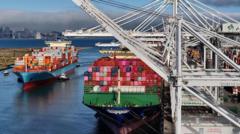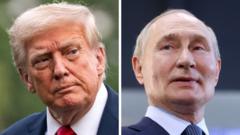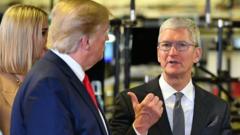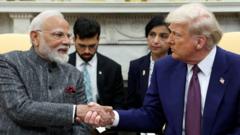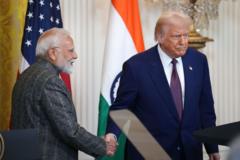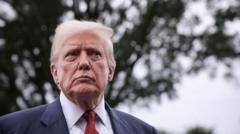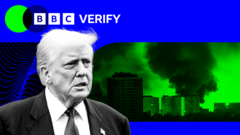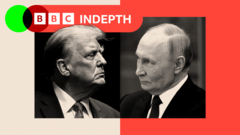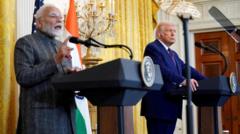**President Trump has enacted significant tariffs on a variety of nations, with plans to reshape global trade dynamics, affecting both allies and adversaries.**
**Trump's Bold Tariff Strategy Affects Global Trade Landscape**

**Trump's Bold Tariff Strategy Affects Global Trade Landscape**
**New tariffs imposed by Trump impact numerous countries, sparking widespread economic consequences.**
US President Donald Trump has implemented a controversial set of tariffs that have taken effect, targeting numerous countries worldwide. Just hours before the midnight deadline in Washington, DC, Trump took to social media declaring, "IT'S MIDNIGHT!!! BILLIONS OF DOLLARS IN TARIFFS ARE NOW FLOWING INTO THE UNITED STATES OF AMERICA!" His aggressive tariff strategy marks a pivotal moment in U.S. trade policy.
One of the most notable measures includes a hefty 50% tariff on Indian goods, set to commence on August 27 unless India ceases its purchases of Russian oil. Additionally, Trump has hinted at a potential 100% tariff on foreign-made computer chips, placing pressure on tech corporations to boost domestic investment in the U.S. This comes on the heels of Apple's announcement of a substantial $100 billion investment to increase U.S. production.
Last week, the administration unveiled a revised list of tariffs and extended the deadline for renegotiating agreements with trading partners to August 7, igniting a frantic race among nations to negotiate lower tariffs. Trump's trade policies, which he frames as "reciprocal tariffs," aim to address what he perceives as unfair treatment of the U.S. in international trade.
Countries in Southeast Asia, reliant on exports, are seeing some of the hardest impacts from these tariffs, with Laos and Myanmar facing tariffs as high as 40%. Several experts note that Trump's focus seems directed toward nations with substantial trading relationships with China.
Despite the broad range of tariffs imposed, some major economies such as the UK, Japan, and South Korea have managed to reach agreements resulting in lower tariffs than Trump previously threatened. The European Union has negotiated a framework to accept a 15% tariff on its goods entering the U.S.
Critical allies like Taiwan are also feeling the pressure, with a tariff of 20% imposed as talks continue with the U.S. On the Canadian front, Trump has increased tariffs from 25% to 35%, citing inadequate cooperation in combating drug trafficking. However, most Canadian exports will remain exempt from the tariffs due to existing trade agreements under the United States-Mexico-Canada Agreement (USMCA).
Mexico has received a temporary reprieve on higher tariffs for an additional 90 days as negotiations progress. In a compatible move, Trump signaled he would impose a 100% tariff on foreign-made semiconductors, although major chip manufacturers with existing investments in the U.S. are reportedly exempt from this new tariff.
Additionally, Brazil's exports are also pegged with a 50% tariff following accusations from Trump against President Luiz Inacio Lula da Silva regarding unfair hostility toward U.S. tech firms.
As the U.S. and China engage in continued discussions regarding a potential extension of a 90-day tariff pause nearing expiration on August 12, the effects of Trump's decisive tariff steps are rippling through global markets, prompting a range of reactions across various sectors.

